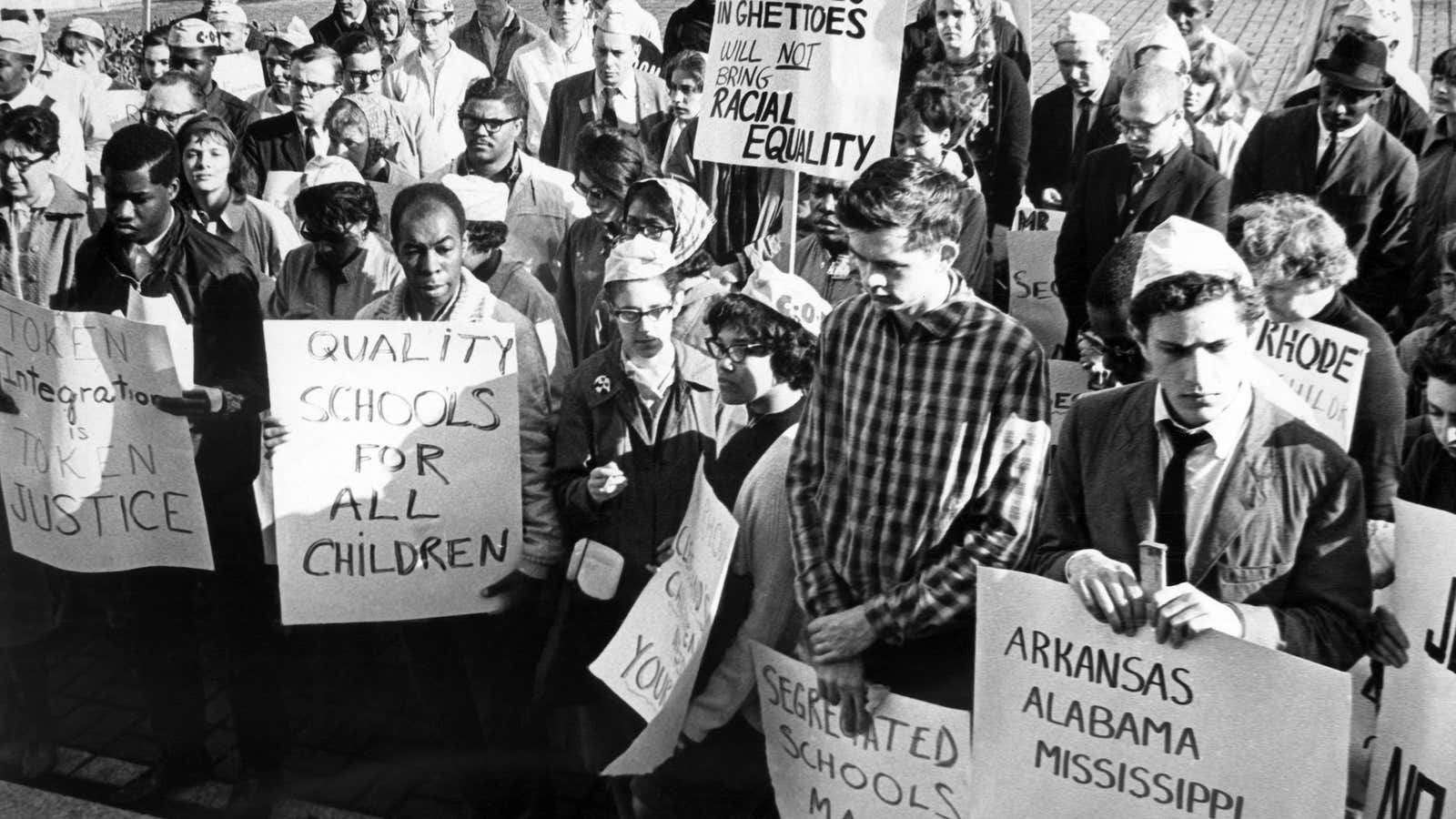Decades of research have shown that segregation negatively impacts students, with consequences accumulating throughout their lives.
And yet segregation in US schools is on the rise, according to a damning new report from the Government Accountability Office.
In 2000-2001, 9% of all public schools (kindergarten to 12th grade) had high proportions of poor and black or Hispanic students. By 2013-2014, that figure was 16%, the report showed.
These schools are disproportionately poor and non-white: 75% to 100% of the students were black or Hispanic and eligible for free or reduced-price lunch—a widely-used indicator of poverty.
Schools with high levels of poverty offer fewer math, science, and college prep courses. While 71% of better-off schools had calculus classes, and 80% offered physics, only 29% of poorer ones had calculus and 55% offered physics. High-poverty schools also had higher rates of students held back in 9th grade, suspended or expelled.
The GAO reviewed nationally representative studies from 2004 to 2014 and found that:
“schools with higher concentrations of students from low-income families were generally associated with worse outcomes, and schools with higher concentrations of students from middle- and high-income families were generally associated with better outcomes.”
In one study, when the average family income of a school increased, the academic achievement and attainment of students of all racial backgrounds improved.
In 2014, a trio of lawmakers asked the GAO to examine racial and socioeconomic isolation in K-12 public schools, and what impact that had on educational equity. Rep. Bobby Scott, one of the members of Congress who requested the report, responded in a statement:
“The GAO report confirms that our nation’s schools are, in fact, largely segregated by race and class. What’s more troubling, is that segregation in public K12 schools isn’t getting better; it’s getting worse, and getting worse quickly, with more than 20 million students of color now attending racially and socioeconomically isolated public schools.”
The government oversight group analyzed education data for school years 2000-01 to 2013-14 as well as relevant federal laws and regulations. It interviewed officials and experts, as well as school district officials in three states. It recommended that the US education department analyze the civil rights data it collects more closely and more often, and that the Justice Department keep a closer eye on federal school desegregation cases.
On May 17, 1954, the US Supreme Court unanimously ruled that state laws allowing “separate but equal” public schools for black and white students were unconstitutional. The landmark case, Brown v. Board of Education, noted that “it is doubtful that any child may reasonable be expected to succeed in life if he is denied the opportunity of an education.” Laws including the Civil Rights Act of 1964 and the Equal Educational Opportunities Act of 1974 have tried to stamp out pernicious segregation.
And yet, on Tuesday (May 17), the US District Court for the Northern District of Mississippi ordered the Cleveland School District to desegregate its high schools and middle schools, after a 50-year fight.
According to the New York Times, Judge Debra M. Brown said in her decision, “Although no court order can right these wrongs, it is the duty of the district to ensure that not one more student suffers under this burden.”
